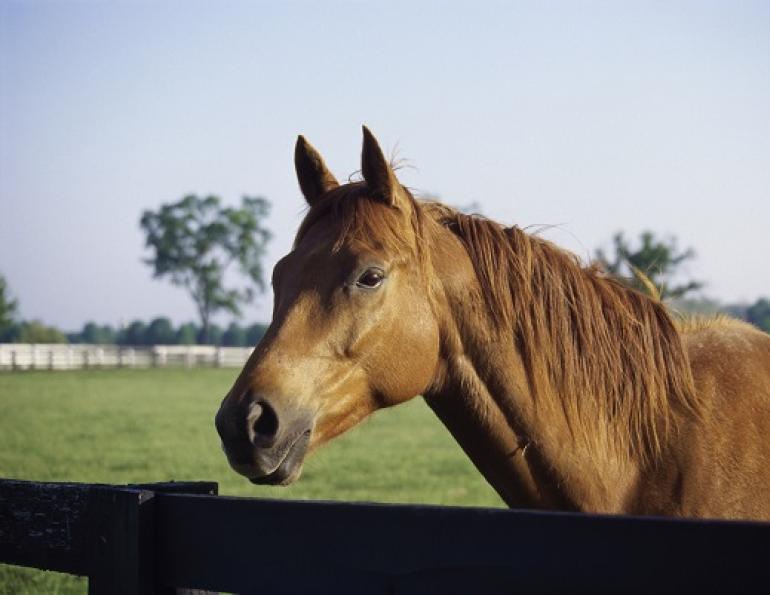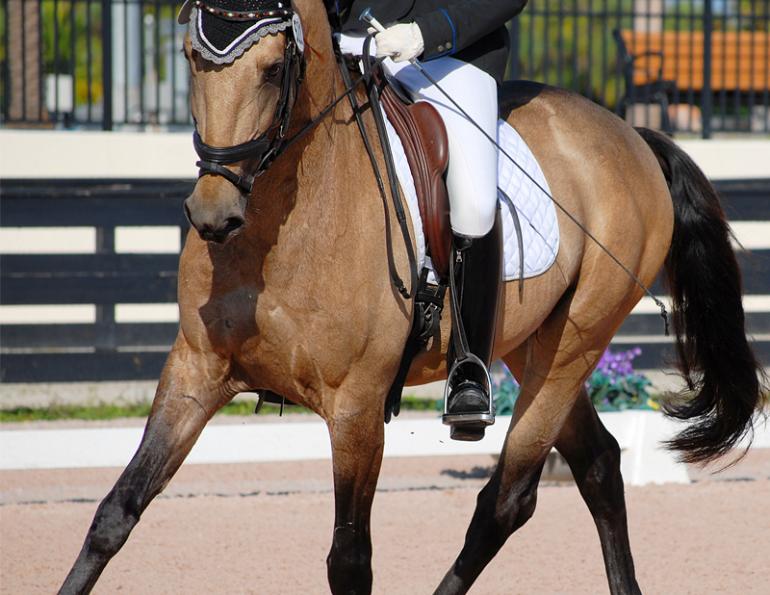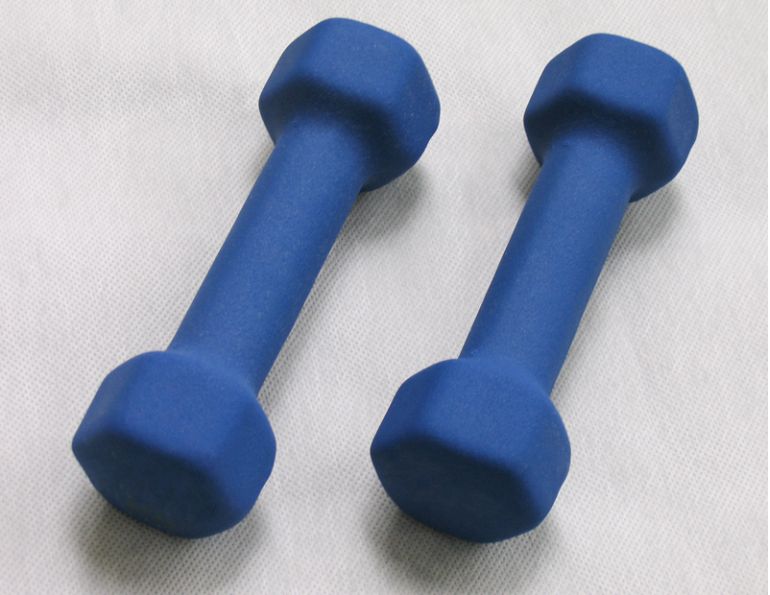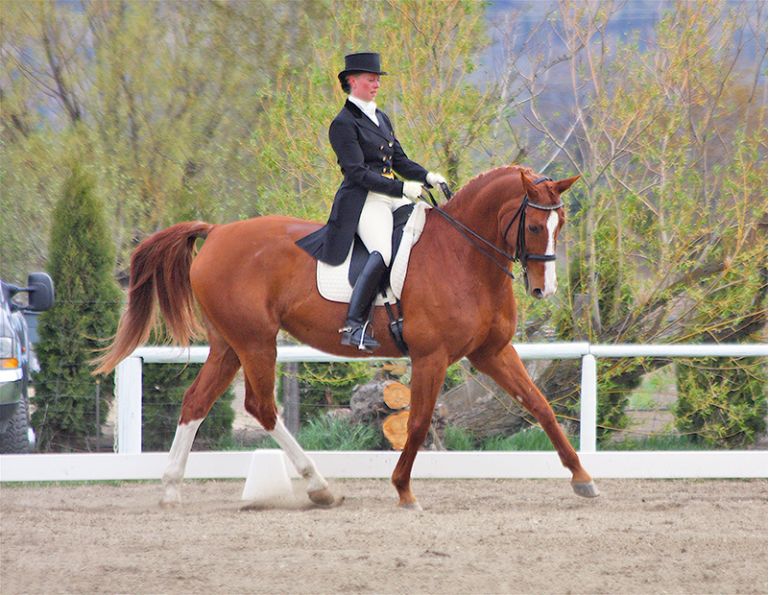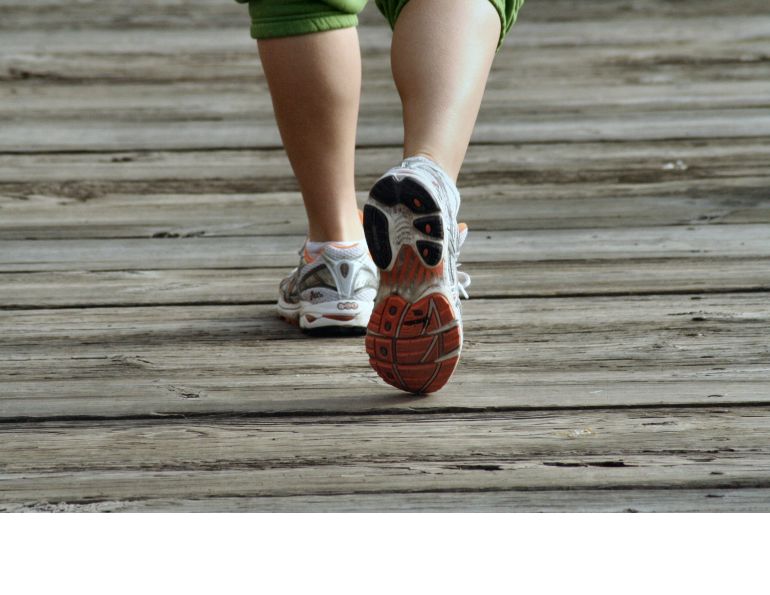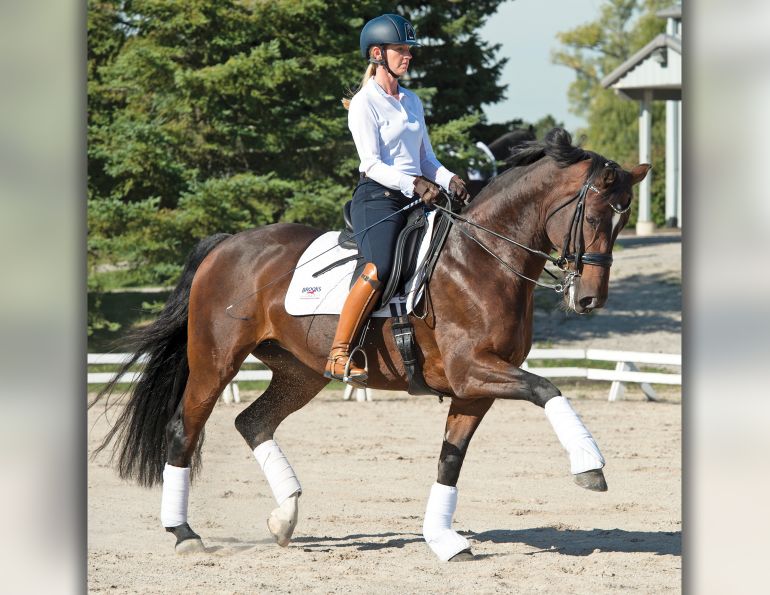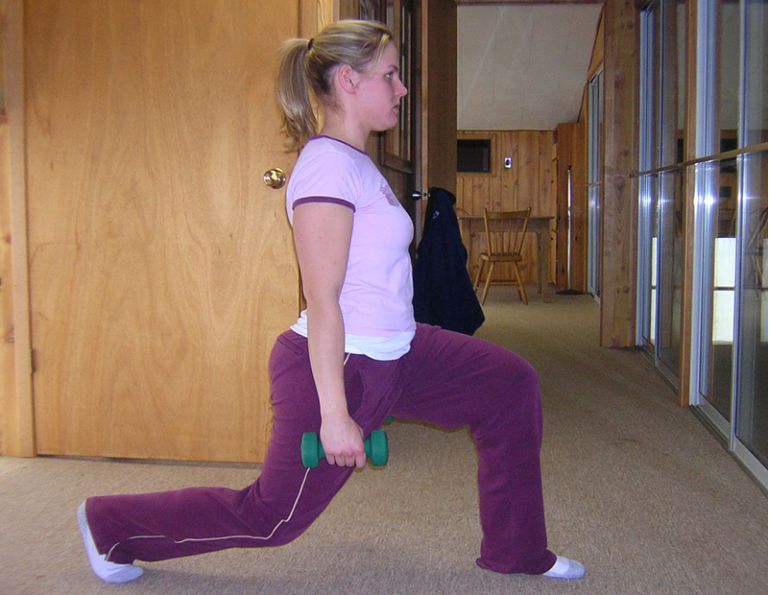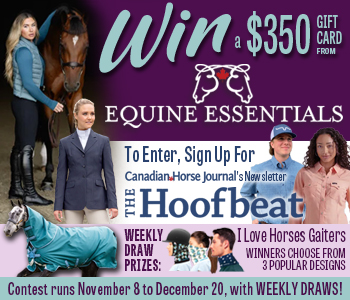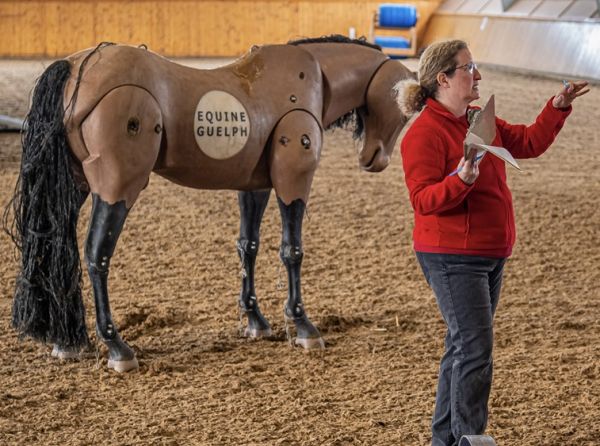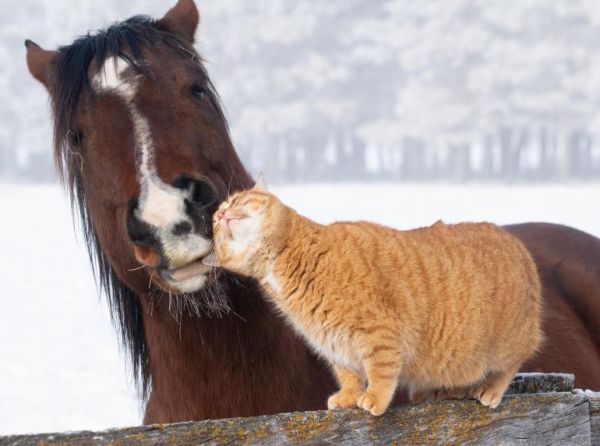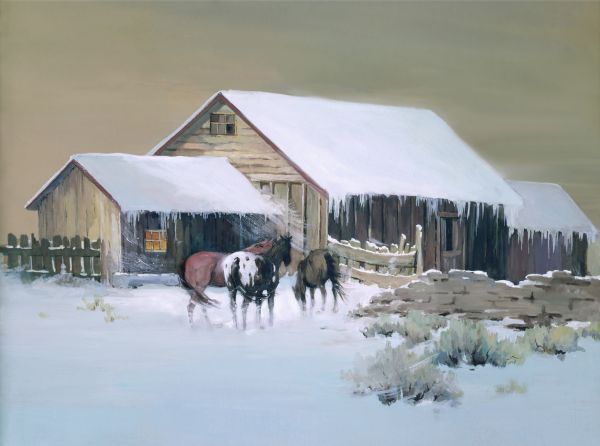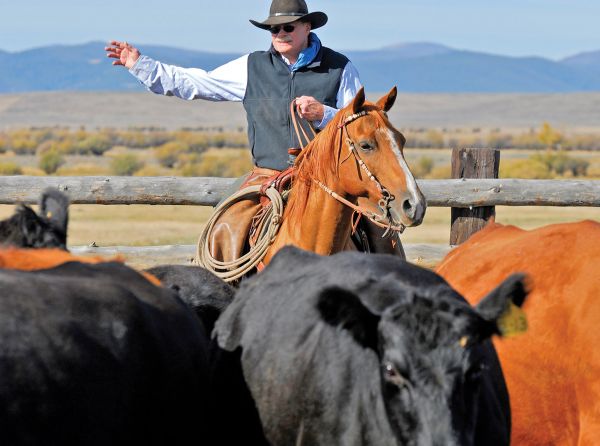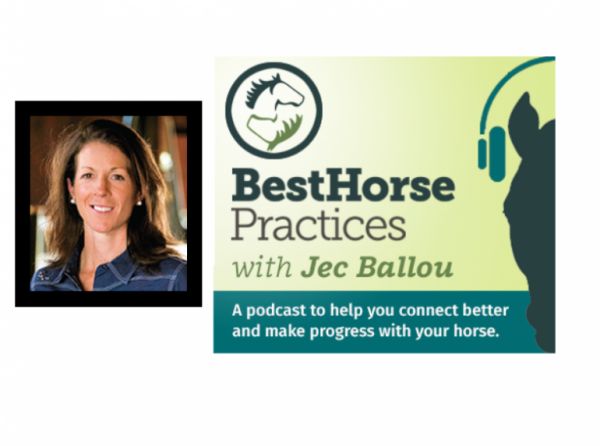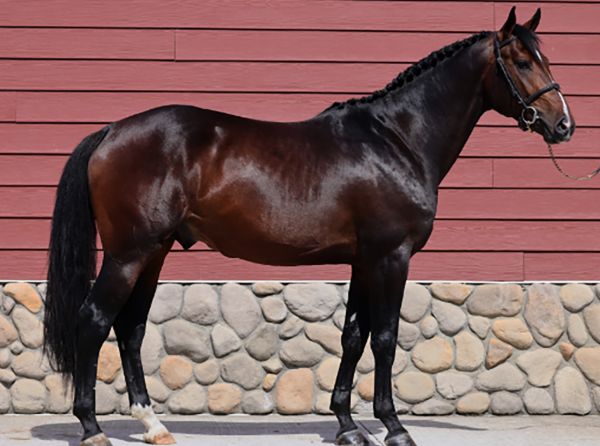Interviewed by Heather Sansom
In the November 2010 issue of Canadian Horse Journal, I interviewed 67-year-old Elroy Karius, a member of the Canadian World Equestrian Games endurance team.
To further explore some of the issues mature riders face, I invited Sue Leffler, a Canadian Level 4 Centered Riding® Instructor and Balimo™ Clinician who works with predominately adult riders, about 45 percent of whom are over 45, to share some of the ideas she has seen work to help mature riders stay fit to ride.
In Canada, we are certainly experiencing a demographic shift where there are more active folks in later middle age and older. Riders are no exception.
As we age, decisions that worked earlier in life may no longer work in the same way they did before. Whether for daily activities, leisure sports, or your main passion (riding), getting the most out of your body means managing your health more closely.
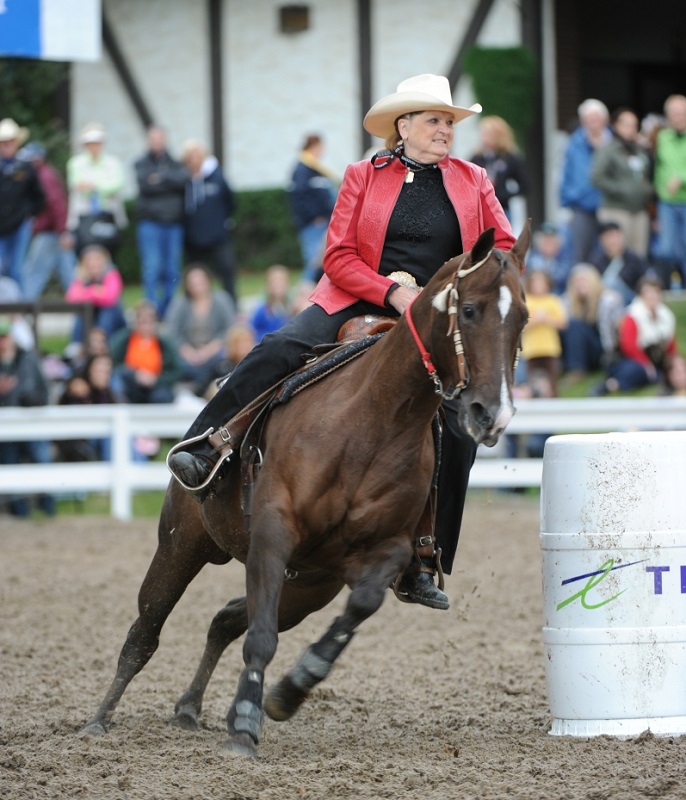
By making adjustments, leveraging their strengths, and minimizing risk, mature riders can stay actively involved in riding well into their senior years. Photo: Robin Duncan Photography
You could summarize life over a certain age as all about health management. If you’ve noticed changes in your body’s response to the demands made on it, you may be tempted to compare the present with the way you managed activity (or didn’t) in the past. But age changes the rules — virtually every decade. Over the age of 50, there are significant changes closer to every five years. Your body loses its ability to adapt to demands and changes. Your muscle memory, cell growth, response time, muscle mass, bone density, ligament and tendon suppleness, skin, heart and lungs, and metabolism all change. Avoiding injury and promoting athletic longevity through the aging process is all about managing the situation. You need to leverage your strengths to minimize risks that could take you out of the saddle or reduce your effectiveness.
You are not alone. Active aging is a hot topic in fitness these days. Riding can be a really good part of your active living strategy.
Heather Sansom: When you are working with someone older who has not had athletic opportunities when they were younger, what have you observed and how did you address it?
Sue Leffler: Often non-athletic people take up riding later in life to pursue a childhood dream now that they have both the time and money to do so. They tend to be thinkers and understanding the “why” and “how” is important to them. They are very motivated riders but definitely need to develop core and pelvic strength to be able to balance on the moving horse. They also need help in not overthinking everything.
Since riding requires us to have flexibility, strength, and the ability to continuously rebalance ourselves, it is the ideal sport for us as we age. I often use exercises from Tai Chi and Chi Gong in my lessons. Tai Chi classes help riders build strength, tone, balance, and flexibility through slow movements and increases their ability to centre and ground. Many of our Centered Riding exercises come from Tai Chi.
Adult riders, and in fact, most riders often have very little body awareness and need help learning how to feel what they are doing and listening to their horse’s response. Without this kinesthetic awareness, riders are not able to apply their aids at the correct moment of their horses’ stride and the horse will be unable to respond to those aids. It is not difficult to have perfect timing for the aids. It only requires correct “feel” and that can be learned. As humans we “feel” and “do” with our hands and feet. As riders we need to learn how to “feel” and “do” from our seat. First we must ensure the pelvis is correctly balanced in the saddle; next we need to become aware of how our pelvis and seat bones are moved by the horse. Playing with the front-back pelvic balance and being aware of how the horse responds to these changes are the first steps to developing timing for our aids. As humans, we see what’s in front of us and want to fix things with our hands. That means we are riding the front of the horse but he’s rear wheel drive! We need to learn how to ride that hind leg power up into our hands and out to the bit. This will keep our horses sound so both horse and rider can continue to enjoy this sport well into old age.
HS: What are the strengths an older rider has? How can an older rider best leverage those strengths to continue to grow as a rider?
SL: It’s funny, but older riders seem to understand that learning a new skill or honing an old one takes as long as it takes. They are not in such a hurry to move on but are able to enjoy the journey and, with it, the small successes. Experienced older riders often know what “correct” is or should be, but have difficulty achieving it. Understanding that it’s impossible to stop an old habit by deciding not to do it, that it must be replaced with a new and better one, is essential to becoming a more effective rider. These habits or holding patterns come from a lifetime of poor posture, accidents including riding accidents, or chronic pain, and inhibit our ability to follow the horse’s movements. In Centered Riding we talk about comparable parts between us and the horse: tightness in one part of our body creates tightness in the same area for the horse. In Balimo lessons and clinics, we give riders specific exercises to free up specific areas and magically the horses’ gaits and movements improve! Too often riders feel that they need stronger arms and legs to ride well so they head to the gym to work out with weights. In reality what they need are stronger core and pelvic muscles to facilitate finding balance. If rebalancing on the moving horse is difficult, we will automatically compensate with our arms, shoulders, legs, etc., disturbing horse-rider harmony.
HS: In what areas do mature riders need more management?
SL: Teaching riders to balance their pelvis in the saddle is definitely important. So is the effect of a rider’s crookedness on the horse. Riders are frequently unaware of how much they are affecting the horse. Most of us are too tight and strong through the hip flexor muscles, making it difficult to maintain that neutral pelvis in the saddle.
HS: What are ways riders can prepare themselves physically to be a better training partner and leader to their horse?
SL: Most riders understand the importance of warm-up for the horse but often forget that they too need to warm-up before mounting. This is especially true in our cold winter climate, but it’s equally important in the warmer weather too. In all sports, they talk about warming up all the muscles that are going to be used doing that sport. Riding requires us to use our entire body; all our joints must be able to move easily if we are to stay in balance and follow the movements of our horse.
An easy exercise to do as you lead your horse in preparation to mount is to take short steps walking first only on your tip toes, then heels, then the outside of your foot, then the inside of your foot. You’ll need to take about seven to ten steps in each of these positions and repeat a few times. This warms up our hip joints, knees, ankles, and gets our body figuring out how to find balance as we do the funky walk.
Because we need to be able to receive the horse’s movement like a wave up through our body, we also need to warm up our torso and all those little muscles between the vertebrae and along the front and back of the spine. You can do this exercise just before mounting:
1. Stand with your feet a little more than shoulder width apart and feet slightly toeing outwards so knees and toes point in same direction.
2. Bend your ankles, knees, and hip joints with your body upright or very slightly tipping forward. Now do very tiny upward bounces or vibrations from your knees with feet flat on the floor while staying solid through the waist.
3. Feel how the motion starts to go through your body, how your shoulder blades start to slide up and down, and how the wave moves out through the top of your head.
4. Continue to play with shifting your weight forward and backward a little and changing the angle of your pelvis a little forwards and backwards. What is the effect on your bouncing? Find the position where it is easiest to do this little bounce. That’s the balance we want to have in the saddle so we can follow the wave from the horse forwards and upwards through our backs and out the top of our heads. You can even do small spirals to the right and left while bouncing.
This is a great exercise to start the energy flowing, relieve tight back and shoulder muscles, and give our bodies a chance to focus on movement through the whole body like we need it to work when we ride.
“Bird dog” starting position.
HS: What are some key ways mature riders can transfer their off-horse bodywork to the way they move in the saddle?
SL: Being aware of how we move and use ourselves in our everyday life gives us the opportunity to change our habits. When walking, be aware if you land heavily on your heels, if you walk on the outside or inside of your feet, if you land more heavily on one foot than the other, if it is easier to turn to the left or right, if you always use the same foot to step up on a curb or on stairs, if your arms swing equally, etc.
When you look in the mirror, is one shoulder higher than the other? Do you stand resting your weight on one leg?
Whatever you do on the ground, you will do on the horse. The place to fix that imbalance is on the ground, not on the horse.
Diagonal arm and leg extended.
If you use a computer all day, try switching which side the mouse is on or use a touch pad instead (this eliminated my shoulder pain at the computer). Use your non-dominate hand to brush your teeth, reach for your coffee cup, etc. If you clean stalls or shovel snow, try switching hands so you work the other side of your body; change which leg you rest on when you stand; or sit near the front edge of your chair to practice better posture.
If you’re self-conscious about doing the funky walk in public, do it on the spot in a bathroom cubicle at work, in your home, or down a quiet trail.
The same goes for the bouncing exercise.
Using air cushions for an added challenge.
Most people have a diagonal imbalance and the “Bird Dog” exercise is a great way to even it out.
Kneel on all fours, engage your abdominal muscles so that your back stays flat, and then lift and point your diagonal arm and leg while keeping your pelvis parallel to the floor.
Hold until you begin shaking, then repeat with other diagonal.
Your goal is to be able to move your arm and leg simultaneously and hold for three to five breaths.
Do several repetitions.
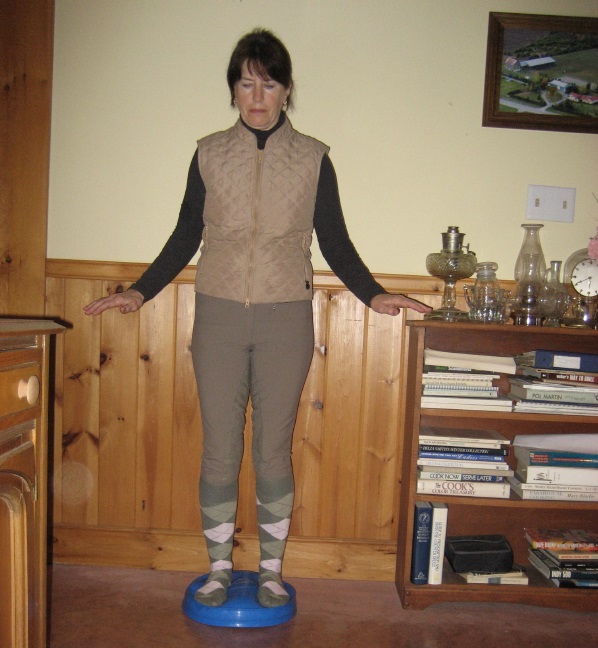
Balancing on a cushion while moving.
To increase the level of difficulty, do the same exercise but with air-filled cushions under the hand and knee that stay on the ground.
HS: It seems that no matter what age group a rider is in, there are basic building blocks to self-carriage, effective aids, and safe riding. How would you summarize these basics?
SL: It is essential that muscles be in balance for a rider to have self-carriage. This means that the muscles in the front and back of the shoulder girdle, front and back of our upper body, and front and back of the hip joints and thighs all need to have equal strength, length, and flexibility. The core muscles need strengthening, including those in the floor of the pelvis, which are particularly important for riders, as well as the muscles surrounding our spinal column. They are very important for self-carriage, independent use of our aids, and our ability to rebalance without thinking on a sometimes unpredictable mount. Our horse can only have self-carriage when we have self-carriage!
More About Sue Leffler & Joan Adler
Sue Leffler is a Level IV Centered Riding® Instructor and Balimo™ Clinician. After attending a clinic in 1985 with Sally Swift, founder of Centered Riding® Inc. and author of Centered Riding and Centered Riding 2: Further Explorations, Sue became a Centered Riding instructor in 1986, then apprenticed with Swift in 1990.
Sue began her riding career at nine years of age after she and her brother got a pony for Christmas from their Dad. From 1973 to 2003 she owned and operated Road’s End Stables near Ottawa, Ontario. A member of the first group of instructors to graduate from the Balimo™ Equestrian Instructor Program in September, 2005, Sue worked extensively with Germans Eckart Meyners, University of Lunenburg, and Hannes Müller, head trainer at the German Riding School in Warendorf, Germany.
She has trained with many excellent clinicians over the years.
In 2003, Sue sold her farm and is now in demand teaching Centered Riding Instructor and Rider Courses and Balimo seat clinics in Europe, Canada, and the USA. When home, she teaches a few private students locally, works with her horse Woody, and does agility training with her Vizsla, Maddy.
Joan Adler (in photos) is a certified Level 1 Centered Riding® Instructor, Balimo™ Clinician, and Equine Canada Level 1 Coach, and has her Level 2 International Trainer Passport through the German coaching system.
She teaches out of her farm, Pleasant Bay Stable in Consecon, Ontario.
To read more by Heather Sansom on this site, click here.
All photos by Heather Sansom unless otherwise specified.



